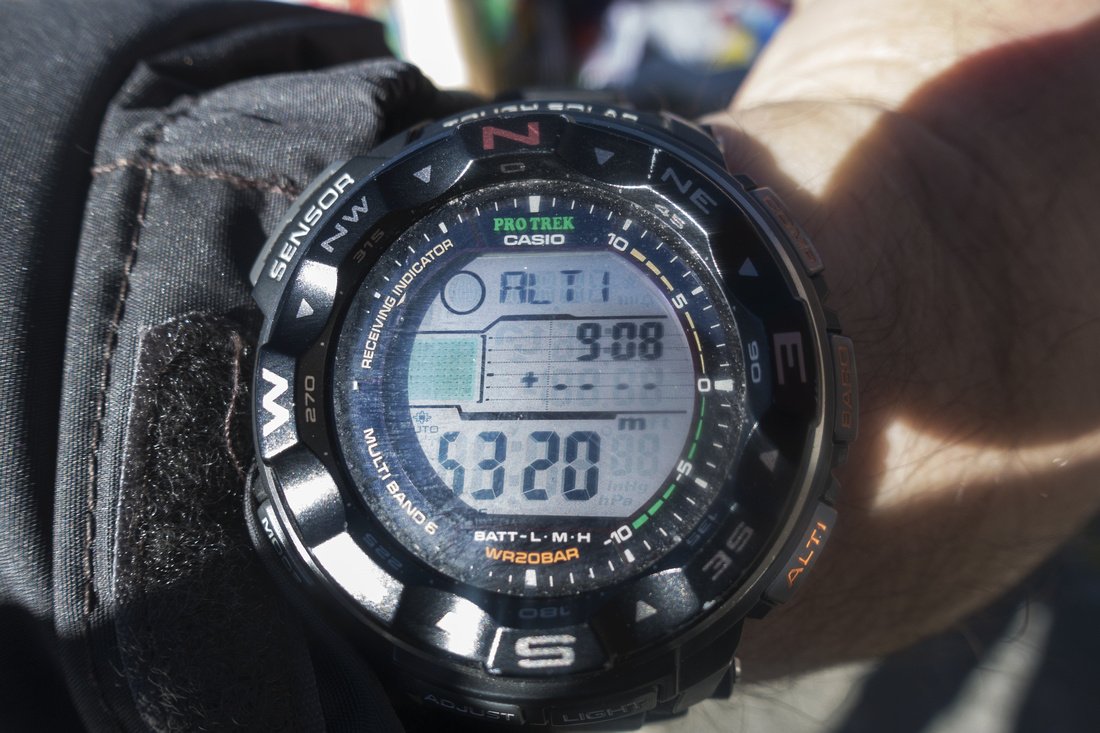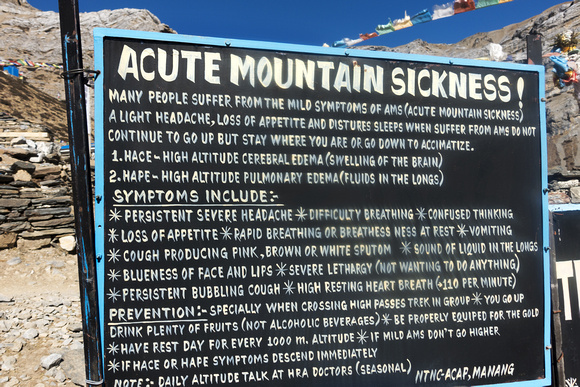Nepal Trekking Resources
Variety of Resources designed to help you prepare your Nepal Journey are summarized on this page. Select link below to learn more about each category
| Travel | Logistics | Gear | Altitude | Culture | Links |
|---|
High Altitude Trekking
 
|
| Trekking Watch Altitude Measurement on Annapurna Circuit approaching Thorung La Pass |
Himalayas are high. North American hikers, used to relatively low Rocky Mountains, will experience altitude problems as most Nepal trekking routes venture well above 4000m. High point on two most popular destinations, Everest Base Camp and Annapurna Circuit, is close to 5500m! AMS (Acute Mountain Sickness) needs to be taken seriously as it can have serious consequences if one did not acclimatize properly. Having the holiday ruined by feeling sick and not being able to reach your destination is first problem; the other can be much more serious and have serious impact to your health. Unprepared people have died from AMS; please prepare seriously for trekking in low oxygen environment before going on Nepal Himalaya trek!
My first experience with high altitude was in Peruvian Andes. Dead Woman Pass (4210m) on Inca Trail. Trek organizers did not leave enough time to acclimatize. I got sick, got diarrhea and was throwing up; luckily trail descended so I was able to recover, but that little accident made me realize how serious high altitude can be. Since then I trekked successfully to Mt. Kinabalu in Borneo (4100m), Mt. Kilimanjaro (5895m) in Tanzania, Mt. Everest Base Camp (~5400m) and Annapurna Circuit (5420m) -- each time it was easier, as I was more experienced and familiar with steps I needed to take in order to make my body adjust. Last time on Annapurna Circuit in December 2019 was easiest; I had no symptoms at all except for being slightly out of breath while hiking over 5000m and crossing Thorung La Pass.
High altitude symptoms are experienced gradually in following stages:
- Stopping more and more often to catch your breath
- Headache
- Digestion problems; diarrhea is most common one
- Disturbed sleep; waking up in the middle of night with feeling of being out of air and suffocating
- Loss of appetite and throwing up; general feeling of being unwell
- Dizziness and disorientation; this is the last stage as fluids are building in your body and pulmonary or cerebral edema can lead to death
Except for the last one, I experienced all of the above and it is NOT fun. Being fit does not mean your body will not have altitude issues, and everybody is different. Only remedy is: Proper Acclimatization
 
|
Acute Mountain Sickness (AMS) Warning Table at Thorung Pedi (~4500m), usual overnight stop before crossing Thorung La Pass on Annapurna Circuit |
Here are some tips, both as widely accepted standards and from personal experience for proper acclimatization:
- Start Hiking low. Even if you could drive higher, don't. Walk the road. On Annapurna Circuit I witnessed unprepared group being driven to Manang (3600m). Their guide was telling them during the dinner "You might have bit of headache tomorrow". I knew there would be trouble and sure enough there was helicopter evac from Thorung Phedi 2 days after.
- Ascend slowly. 500-600m of elevation per day is optimal.
- Walk slowly and rest often, even if you don't feel tired (Besides, why rush -- stop and enjoy the scenery!)
- Drink. Even when you are not thirsty. You will pee a bit more, but so what. Just drink.
- Follow "Hike high, sleep low" principle. That means every day after you settled in the lodge, try to hike a bit up to some hill, then come back. Try to gain / lose 200-300m if possible.
- Have a rest day every 1000m of gained altitude. Usual rest stop on Annapurna Circuit is Manang (3600m) and Namche Bazaar (3500m) on Everest Base Camp Trek.
- Have high altitude rescue clause in your trekking insurance. It might cost a bit more, but I heard cost of evac to Kathmandu is ~10K USD!
Finally, word about Diamox: It is commonly used drug to help with AMS. You need prescription in the west, but in Nepal you can get Diamox over the table. In Tanzania group guide just gave everyone Diamox. But this is not magical wand that will compensate for not acclimatizing properly. It works by reducing build-up of fluids in the body, that can otherwise lead to edema and death. Peripheral neuropathy is common side effect, as well as frequent urination. It should be used just as last resort; there is reason why prescription is required in the west, and I do not recommend it as standard acclimatization 'tool'.